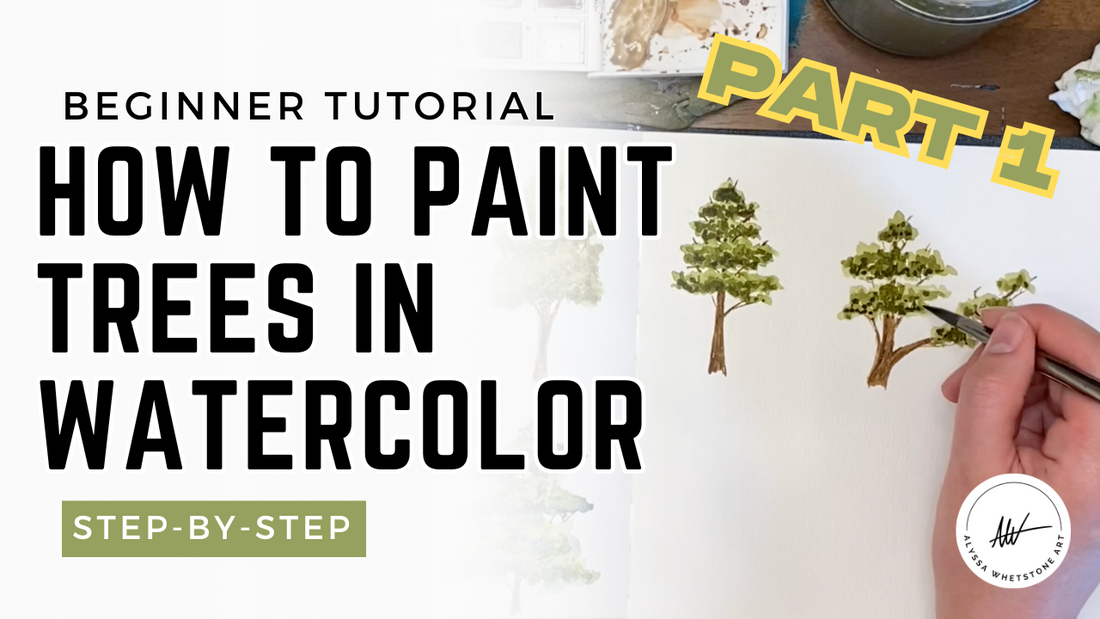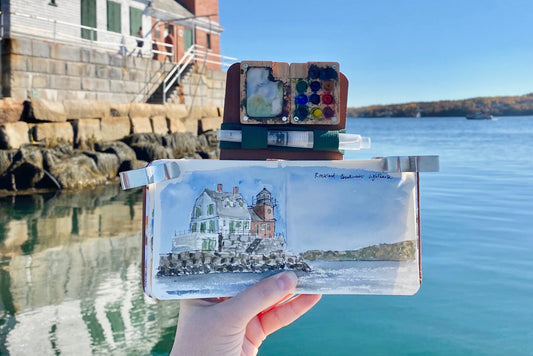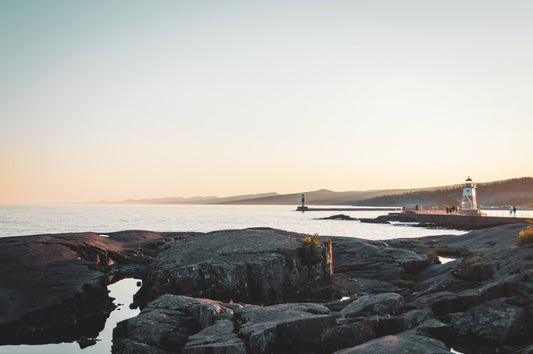
How to Paint Watercolor Trees: A Beginner-Friendly Tutorial Using Layering and Value
Share
Watercolor trees are a great place to start if you're learning to paint—and in this beginner-friendly tutorial, I’ll walk you through how to paint two types of trees using simple layering techniques, thoughtful color mixing, and brush control.
No complicated tree anatomy, just approachable steps with lots of space for creativity.
🎥 Watch the full video tutorial here
Why You'll Love This Tutorial
✅ Perfect for beginners
✅ Simple supplies (just a few well-mixed colors!)
✅ Clear steps for painting tree shapes, foliage, and trunks
✅ Realistic results using easy techniques like wet-on-wet and dry brushing
Materials You'll Need
- Watercolor paper (140 lb cold press recommended) I'm using this sketchbook.
- Round brushes: a larger brush (like a size 8–10) and a small detail brush (like a size 2) My favorite lately have been these by Royal and Langnickel.
- Paints: Sap Green, Raw Umber, Raw Sienna I'm using colors by Daniel Smith such as this set.
- Water, paper towel, optional hair dryer for drying between layers
I like to mix Sap Green with a bit of Raw Umber to tone down the brightness and get a more natural, earthy green.
Get all my favorite watercolor supplies in one convenient document HERE!
Tree #1: Layered Foliage with Wet-on-Wet & Lifting Techniques
1️⃣ Start Light
Begin with a very diluted green mixture. Think “tea” consistency—lots of water, soft pigment. Use your larger round brush to create a tree shape with layered, slightly separated blobs that roughly form a triangle.
Keep your hand loose and allow some white space between the layers—this mimics how we can see sky or background through real trees.
Tip: If your first shape is watery, “steal” pigment from it with your brush to keep values consistent across the tree.

2️⃣ Add Midtones (While Still Wet)
While the paper is still damp, mix a more pigmented version of your green (think “coffee” consistency) and dab it into the lower parts of each section. This creates soft transitions and depth.
If the paint bleeds too much, dry your brush and lift the excess by blotting. You can also use a tissue to lift highlights—just know it’s a bit less precise than the brush method.
3️⃣ Dry and Go Darker
Once the layer is dry, use the same color mixture (or slightly darker) and switch to a wet-on-dry technique. Dot your brush around the edges and center of the foliage, leaving plenty of the lighter areas visible.
These darker marks create texture that resembles clumps of leaves.

4️⃣ Final Layer with Brown-Green Shadows
To finish, add a bit more Raw Umber into your green to get a chocolatey tone. Use this sparingly along the bottom of leaf clusters to build richer shadows.

5️⃣ Add the Trunk & Branches
With your smaller brush and a pigmented brown mix (Raw Umber + Raw Sienna), paint a trunk that’s wider at the base and narrows upward. Use this mix to paint branches weaving through the light spaces you left in the canopy.
Pro tip: Branches look more realistic when they start thicker and taper off. Don't worry about making them perfect—trees are wonderfully wonky!
Tree #2: Funky Shapes with Crisp Wet-on-Dry Layers
Next, I challenge you to create a second tree using the same techniques but change the over all shape!
1️⃣ Light, Uneven Foliage
For this tree, start with the same light green, but create a more organic, uneven shape. Use the side of your brush to stamp and push the paint around, leaving irregular edges and gaps.
Add one or two blobby “branches” off to the side for a more dynamic structure.

2️⃣ Let It Dry, Then Add Midtones
This time, let your light layer dry first before adding midtones. Mix a thicker version of your original green and layer it on using dabs and clusters. Try to cover about 70% of your light color with this new midtone layer.
3️⃣ Paint the Tree Trunk
Add your trunk and branching limbs just like before—starting wide, tapering thin, and wiggling your way through the foliage. Let some branches show between clumps or even stick out on their own.
4️⃣ Deepest Shadows Last
For your final value, add a bit more brown and create the darkest details. This is where shadows from overlapping leaves or inner canopy areas go. These marks should be small, spaced out, and mostly near the trunk or the underside of branches.
Remember: The center of the tree, near the trunk, will likely be the darkest overall.
Final Thoughts 🙌
Watercolor trees don’t have to be intimidating. With just a few well-planned layers and a balance of light and dark values, your trees can feel full of life and texture. Keep these takeaways in mind:
- Start light and build up in layers
- Leave white space—it makes your trees feel airy and realistic
- Mix your greens to tone down brightness and add depth
- Think about where the light hits and where shadows naturally fall
Painting trees is a great way to practice brush control, value, and layering—and every tree you paint tells its own little story.
Helpful Links & Resources 🌱
🎥 Watch this tutorial on YouTube
🎨 Explore my beginner-friendly watercolor courses
📸 Follow me on Instagram: @alyssawhetstoneart




